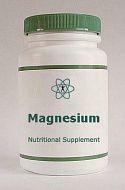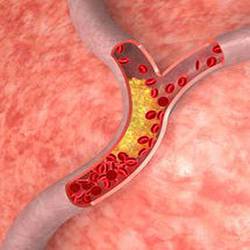Calcium and Magnesium
| Cellular Nutrition
Calcium (Ca) and Magnesium (Mg) are associated minerals, and considered essential to human health. They are the "Gold Standard" when discussing (trace) mineral-related health issues. (For information on Calcium to Magnesium Ratio see: "Mineral Ratios for Calcium, Magnesium and other Elements").
Calcium has become the most promoted nutrient by proponents of conventional, nutritional, and alternative medicine - yet at the same time, the assumed need is based purely on the speculation that the body's dietary calcium intake is well below its requirements. Since a patient's calcium status cannot be established through routine blood tests (serum calcium does not reflect dietary needs!), guidelines - including for postmenopausal women - continue to follow the same standard recommendations, regardless of individual variations in calcium absorption or requirements.
This created situations where some people remained deficient despite additional calcium intake, while others ended up with calcium overload, leading to calcification of arteries and other soft tissue.[1] In 2012, a study was published by New Zealand researchers claiming that calcium supplementation might increase the risk of heart disease, prompting an update to physician guidelines to discourage patients from supplementing extra calcium.
A subsequent AJCN study found no link between supplemental or dietary calcium intake and coronary artery calcification,[2] however a Swedish study released in early 2013 again linked a higher dietary or supplemental intake of calcium to a greater risk of dying from heart disease!
Until guidelines are officially revised, patients are advised to continue with current recommendations on their calcium intake, which will continue to help individuals who are chronically calcium deficient, but it will unfortunately also continue to worsen those who suffer from calcium overload.
Of the approximately 1,000 g of calcium in the average 70 kg adult body, almost 98% is found in bone, 1% in teeth, and the rest is found in blood, extracellular fluids, and within cells where it is a co-factor for a number of enzymes. Calcium promotes blood clotting by activating the protein fibrin, and along with magnesium helps to regulate the heart beat, muscle tone, muscle contraction and nerve conduction.
Parathyroid hormone (PHT) secreted by the parathyroid gland and calcitonin secreted by the thyroid gland maintain serum calcium levels at a range of between 8.5 to 10.5, whereby calcium is mobilized from bone reserves, and intestinal absorption of calcium is increased as needed. The parathormone can also affect renal functions to retain more calcium. When blood calcium goes up from too much parathyroid activity, calcitonin reduces availability of calcium from bone.
The calcium to phosphorus ratio in bone is about 2.5 :1, while the ideal dietary phosphorus / calcium ratio is estimated to be about 1:1. Many dietary factors reduce calcium uptake, such as foods high in oxalic acid (spinach, rhubarb, beets, chocolate), which can interfere with calcium absorption by forming insoluble salts in the gut. Phytic acid, or phytates found in whole grain products, fiber-rich foods, excess caffeine from coffee, colas, tea, as well as many medications reduce the absorption of calcium and other minerals, or leach calcium from bone. Normal intake of protein, fats, and acidic foods help calcium absorption, however high levels of these same sources increase calcium loss.
Chronic calcium deficiency is associated with some forms of hypertension, prostate and colorectal cancer, some types of kidney stones, miscarriage, birth (heart) defects in children when the mother is deficient in calcium during pregnancy, menstrual and premenstrual problems, various bone, joint and periodontal diseases, Muscle Spasms and Cramps, sleep disturbances, mental health / depressive disorders, cardiovascular and/ or hemorrhagic diseases, and others (listed on Page 2).
Elevated calcium levels are associated with arthritic / joint and vascular degeneration, calcification of soft tissue, hypertension and stroke, an increase in VLDL triglycerides, gastrointestinal disturbances, mood and depressive disorders, chronic fatigue, increased alkalinity, and general mineral imbalances. High calcium levels interfere with Vitamin D and subsequently inhibit the vitamin's cancer-protective effect unless extra amounts of Vitamin D are supplemented.
Serum Calcium may change with kidney or parathyroid diseases, cancer, antiestrogen therapy, sarcoidosis, tuberculosis, and other conditions, but it does not change with higher or lower dietary calcium intake, so it cannot be used as a nutritional excess or deficiency indicator. In the event of a dietary deficiency, the body simply covers calcium requirements from bone reserves. Other methods to assess someone's calcium status include a 24-hour urine collection (not accurate at all), or a bone scan. The latter does not measure calcium specifically, but assesses overall bone density, which reflects the total content of all other minerals present in bone as well.
Since the average practitioner does not have the resources to accurately determine a patient's requirements for calcium, magnesium, and most other essential minerals and trace elements, it is left up to patients to use labs or specialized services that measure intracellular nutrient levels through a Red Blood Cell or White Blood Cell mineral analysis, a fluorescence analysis of epithelial cell samples, or other types of intracellular analysis.

Magnesium: There are about 19 g of Mg in the average 70 kg adult body, of which approximately 65% is found in bone and teeth, and the rest is distributed between the blood, body fluids, organs and other tissue. Magnesium is involved in the synthesis of protein, and it is an important co-factor in more than 300 enzymatic reactions in the human body, many of which contribute to the production of energy, and with cardiovascular functions. While calcium affects muscle contractions, magnesium balances that effect and relaxes muscles. Most of magnesium is inside the cell, and while iron is the central atom in hemoglobin, magnesium is the central core of the chlorophyll molecule in plant tissue.
Although the process of absorption for magnesium is similar to that of calcium, some people absorb or retain much more magnesium than calcium (or more calcium than magnesium), so the commonly suggested intake ratio of 2 :1 for calcium and magnesium is really an arbitrary value that can change significantly under various individual circumstances.
Low magnesium levels can be a causative, contributing, or aggravating factor with kidney stones (usual recommendations for prevention are 400mg of magnesium oxide and 50mg of Vitamin B6 daily), high blood pressure, mitral valve prolapse (MVP), arrhythmia, tachycardia, coronary artery spasm and other types of heart problems, menstrual cramps or premenstrual syndrome (PMS), insomnia, anxieties, (pre)eclampsia - particularly when too much iron and not enough folic acid is taken during pregnancy, chronic constipation, tetany (sustained contractions, convulsions), hyperactivity (with children), and others (more on Page 2).
However, frequent and excessive use of magnesium sulfate (Epsom salt) or antacid remedies such as Milk of Magnesia can eventually trigger a number of medical problems resulting from other minerals such as sodium, potassium, calcium, or iron getting out of balance. This is more prevalent with kidney diseases and may include fatigue, depression, low blood pressure, dizziness, diarrhea, muscular / joint problems, dehydration / dry skin, and gastrointestinal or cardiovascular disease.
Calcium, magnesium, chromium and copper belong to a group of elements that exhibit anti-inflammatory or degenerative properties at higher levels, in contrast to elements such as potassium, zinc, manganese, or iron, which are pro-inflammatory when high.
Depression can be related to high and low levels of calcium and/or magnesium, with low levels being oftentimes associated with anxieties as well. After comparing the background of patients who required very high doses (4,000+mg) of calcium a day - just to reach near normal levels, it turned out that many had a history of benzodiazepine (tranquilizers / sedatives) use. These drugs either affected their body's ability to properly utilize calcium and/or magnesium, or the mineral levels in these patients had already been very deficient before taking any medications - resulting in insomnia, anxieties, or similar symptoms, and resulting in drugs (benzodiazepines) being prescribed instead of having the real cause (calcium and/or magnesium deficiencies) corrected. Unfortunately, this type of symptomatic drug therapy continues to be a trademark of modern medicine.
Osteoporosis can result from both, low and high levels of calcium, magnesium, copper, phosphorus, silicon, fluoride, chromium, (and Vitamin D), but mostly as a result of their improper ratios to one another. There are just as many patients with excessive, as with deficient calcium levels, whereby the treatment chiefly consists of having them supplement whichever co-factors are low in ratio to calcium, which may include manganese, phosphorus (protein), magnesium, zinc, omega 3, Vitamin C..., or the use of acid-raising digestive remedies to increase solubility or bioavailability of calcium. (see also "Osteoporosis").
A high intake of calcium for the prevention of osteoporosis can be bad news for a person's cardiovascular system, since it is frequently promoted without a proper assessment to establish that it is indeed calcium which is needed, and not any of several co-factors that help calcium absorption into bone. The foremost task when dealing with mineral-related medical conditions, is to correct their ratios. Deficiency symptoms - particularly those involving calcium and copper - can still take place despite their levels being normal or above normal, when either associated, or interactive elements are even higher yet.
Vitamin K fulfills an important role in the utilization of calcium and prevention of osteoporosis through its effect on osteocalcin, which helps maintain calcium in bone, but at the same time keeps it out of soft tissue. While Vitamin D helps in the synthesis of osteocalcin, Vitamin K is required for it to function properly. Research has shown that Vitamin K and E help reduce calcification of arteries, however Vitamin K (ideally in the form of Vitamin K2) was additionally able to slow calcium loss in those with a tendency to lose it, and it better helped maintain bone density and prevent osteoporosis than Vitamin D and synthetic estrogen.
Boron supplementation may be a consideration for individuals with chronically low calcium and magnesium levels, however as a result of Boron inhibiting manganese, it is best suited for those with congestive liver disease who generally exhibit higher manganese levels (manganese inhibits calcium and magnesium), but not for those whose manganese levels are already on the low side.
Vitamin D assists intestinal absorption of calcium, phosphorus, and to a minor degree, magnesium. While taking higher amounts of Vitamin D may protect from several types of cancer or be helpful for some neurodegenerative conditions such as multiple sclerosis, excessive long-term intake of Vitamin D can result in above-normal serum calcium levels, and calcification of arteries and other soft tissue (preventable with sufficient intake of Vitamin K2). Supplementing large amounts of Vitamin D and not increasing one's calcium intake at the same time will risk a high Vitamin D-induced calcium loss from bone as a result of insufficient intestinal calcium being available for absorption. This only applies to a very high oral intake of Vitamin D, but not to higher amounts acquired from sun / UVB exposure.
Individuals who exhibit below-normal calcium or magnesium levels get away with more atherogenic (artery-clogging) diets compared to those with normal or higher levels, but once their calcium or magnesium levels are raised, they too will have to watch their sugar and (trans) fat intake more:
| Calcium raises: VLDL Triglycerides | Magnesium raises: LDL Cholesterol |
| Calcium raises: SC, MC & LC Triglycerides | Magnesium raises: HDL Cholesterol |
| Calcium raises: Total Triglycerides | Magnesium raises: Total Cholesterol |
| Calcium raises: Phosphorus | Magnesium raises: Sodium |
For the above reasons, calcium and magnesium, at higher amounts, exhibit atherogenic properties, however by also lowering phosphorus (Ca) and sodium (Mg), they create an additional negative scenario of low phosphorus eventually raising VLDL triglycerides, and low sodium eventually raising LDL cholesterol.
Short-term studies have demonstrated that magnesium may reverse atherosclerosis, although the exact opposite (LDL-promoting) effect may take place in the long run as a result of its lowering effect on sodium (sodium increases HDL cholesterol). This is why it is important to compare and evaluate nutritional studies with identical amounts and types of nutrients, the same testing methods, and also similar lengths of trials.
To help boost calcium levels in individuals with chronically low calcium absorption, supplementing Vitamin B5 (pantothenic acid) can be helpful in inhibiting the antagonistic action of phosphorus (if high), while taking extra Vitamin B2 (riboflavin) will increase magnesium uptake by inhibiting sodium and iron. A Magnesium and Vitamin B2 combination can be effective in relieving one-sided Migraines if caused by elevated iron or sodium. Titanium implants support calcium, but not magnesium retention.
High amounts of Vitamin B6 will also increase magnesium retention following long-term oral supplementation, while regular Vitamin B6 injections will quickly result in a high magnesium / low calcium ratio, or there is the potential of eventually creating a severe calcium deficiency. This can result in insomnia, heart palpitations, chest pains, depression, mood swings, anxieties, or bone, joint or muscle pains. If given Vitamin B6 + B12 injections at Weight Loss Clinics, one should be aware of these potential symptoms. (see also "Diets").
In low calcium situations and a disposition for high stomach acid, supplementing larger amounts of Vitamin C can be a problem not only for those with a sensitive stomach, but also for calcium uptake since too much acid results in calcium loss. While some types of 'Buffered C' such as Calcium Ascorbate help in milder cases, Sodium Ascorbate would be another option in more severe cases, provided there is no sodium sensitivity, or a history of kidney disease.
Contrary to the claims of uninformed sources, Low Stomach Acid does not pose a problem with calcium absorption, as even patients with no acid production (achlorhydria) are able to absorb calcium regardless of whether it comes in the form of calcium citrate, calcium carbonate, or milk. However low stomach acid affects the proper utilization of calcium, frequently resulting in calcium being deposited into soft tissue instead of bone, which as mentioned, increases the risk for developing arthritis, spurs, bone loss, cerebral and cardiovascular calcification, as well as other physical and mental disorders.
High Stomach Acid is of equal concern since it will frequently result in calcium and/or magnesium loss. However, by lowering acid levels, high calcium and/or magnesium intake can have a significant impact on medical conditions that are already affected by abnormally low stomach acid levels. For instance, if infected with Helicobacter Pylori, the bacteria is always more active under low acid conditions, while long-term infections with H. Pylori, or salt-restricted diets can at times reduce stomach acid levels enough to affect or impair Vitamin B12 uptake. As a result, the best forms of calcium may be chosen based on an individual's tendency for low stomach acid or constipation, for which Calcium citrate is usually better suited, in contrast to a tendency for softer stools or high stomach acid, for which Calcium carbonate or Calcium oxide may be better choices.
Some companies promote "Krebs Cycle" intermediates, consisting of calcium carbonate, citrate, malate, fumarate, glutarate, and succinate, however when comparing their 650 mg tabs to standard 500 mg calcium carbonate tabs, Dr. Ronald Roth found the absorption of calcium carbonate tablets somewhat superior for those with normal stomach acid levels or when taken with meals. In contrast to calcium carbonate, these so-called krebs cycle calcium formulations may also be less tolerated by those suffering from allergies, or a faulty immune system.
From over 35 years of monitoring the absorption of various types of calcium (and other minerals) in patients, if tolerance is an issue, Dr. Ronald Roth had found Chelated Calcium to be the most consistently tolerated, while at the same time needing the least amount of supplementation to meet patient requirements.
Nutritional texts stating that "Calcium is best taken between meals, or without foods, when the stomach is more acidic" were written at a time when research findings were based on the older urinary increment tests, but have long since proven invalid. Scientific studies done with Radioisotope Analysis,[3] or intracellular tests such as Acu-Cell Analysis show that most types of calcium fall into the same 30 - 40% absorption range, regardless of solubility:
| 31% for calcium from milk | |
| 32% for calcium acetate (most soluble form)' | 25% elemental |
| 32% for calcium lactate | 13% elemental |
| 27% for calcium gluconate | 9.3% elemental |
| 30% for calcium citrate | 21% elemental |
| 39% for calcium carbonate (least soluble form)' | 40% elemental |
The range of absorption narrows further and increases percentage-wise when calcium is taken in smaller doses of 300 mg - 500 mg throughout the day (as needed), which is particularly helpful for people who are not able to absorb higher amounts (1,000+mg) of calcium in a single meal. However the largest single dose of the day is best taken in the evening, as calcium requirements are greatest during sleep, hence deficiency symptoms such as nocturnal leg cramps or insomnia. When supplemented with food, overall uptake of all types of calcium is up to 30% greater, and absorption between calcium citrate and calcium carbonate for instance becomes virtually identical. Inconsistencies are found only when calcium is supplemented in different forms, such as tablets versus gelatin capsules, where the gelatin itself may not dissolve properly in a low acid environment.
For details or reasons why Coral Calcium and AdvaCAL Calcium are not recommended, see "Diets & MLM."
Stomach acid levels not only affect the absorption of Calcium and Magnesium (and vice versa), but also Iron and Manganese (and vice versa), however both mineral pairs interact in opposite directions:
Higher acid levels in the upper portion of the stomach support iron uptake, but result in calcium loss, while high acid levels in the lower portion of the stomach support manganese uptake, but result in magnesium loss. This effect is generally negligible unless there is a significant Ca/Mn or Fe/Mg ratio conflict, or acid-lowering drugs such as Proton Pump Inhibitors (Nexium, Losec...) are used, which will raise magnesium, following a reduction of acid in the (more so) lower portion of the stomach. However the effect of these drugs on liver functions will result in excessive manganese levels.
When low stomach acid levels are linked to osteoporosis, it is assumed to be the result of reduced calcium absorption. However as mentioned above, calcium uptake under low acid conditions is either normal, or even on the high side, with calcium becoming bio-unavailable and potentially resulting in reduced bone density and calcification outside of bone unless sufficient acidifying co-factors are present. In contrast, manganese and iron absorption are reduced under low stomach acid conditions, or with high magnesium or calcium levels:

Acid production in the upper area of the stomach can vary from the lower area of the stomach as a result of their neurological disassociation. Spinal misalignment at T12 can trigger acid-related stomach disturbances that won't respond to either acid-raising or acid-lowering remedies. Only spinal manipulation, or choosing the proper minerals according to their acid-raising / lowering, or upper / lower association will resolve these types of conditions. High stomach acid can in the long run lower calcium and/or magnesium levels enough to cause chronic insomnia, or an inability to reach deep sleep levels 3 to 4, which are more difficult to achieve with low calcium levels, and commonly results in chronic daytime fatigue.
Most people confuse Heartburn with high stomach acid levels, however, the discomfort is generally due to acid getting into the esophagus, which does not have the acid-protective mucous coating of the stomach, so it is basically a structural (reflux) problem. "Heartburn" may also be due to low stomach acid levels, which develops after meals and results in bloating, nausea, and/or frequent burping, and which generally responds to acidic remedies such as apple cider vinegar, lemon or lime water, or acid-raising formulations containing betaine, pepsin, and glutamic acid. Bromelain can be considered for gastritis-related heartburn, or ulcers, where acid-raising supplements are contraindicated. (see also "H. Pylori and low Stomach acid").
Other than the potential to cause indigestion, bloating, or malabsorption of essential nutrients (Vitamin B12), long-term low stomach acid situations are a risk factor in the development of several types of Cancer. This in itself calls for prudence when enticed by the media - or even by a medical practitioner - to supplement large amounts of calcium or magnesium, without a proper analysis to substantiate that such action is warranted.

 Manganese may help with some symptoms of Parkinson's disease such as muscle rigidity and twitching...
Manganese may help with some symptoms of Parkinson's disease such as muscle rigidity and twitching...
 Research shows that phytosterols such as beta-sitosterol may help normalize the function of natural killer cells and T-helper lymphocytes...
Research shows that phytosterols such as beta-sitosterol may help normalize the function of natural killer cells and T-helper lymphocytes...
 Iron deficiency may be suspect with some forms of ADHD. 84% of children with ADHD were found to have abnormally low levels of ferritin...
Iron deficiency may be suspect with some forms of ADHD. 84% of children with ADHD were found to have abnormally low levels of ferritin...
 A high intake of B Vitamins can trigger heart palpitations, HBP, major complications in patients with congestive heart disease...
A high intake of B Vitamins can trigger heart palpitations, HBP, major complications in patients with congestive heart disease...